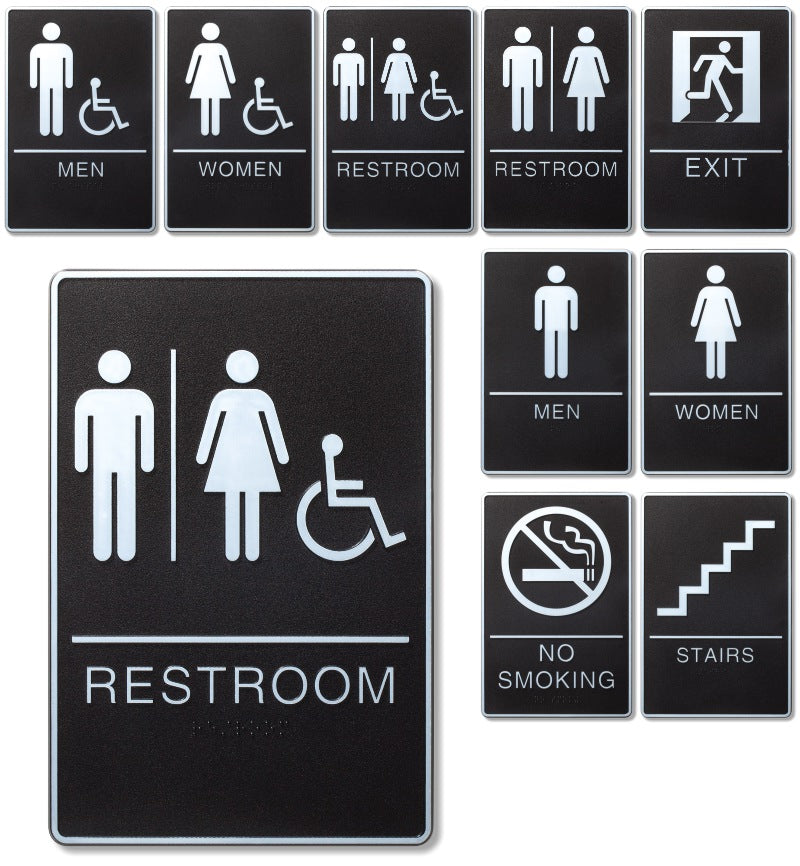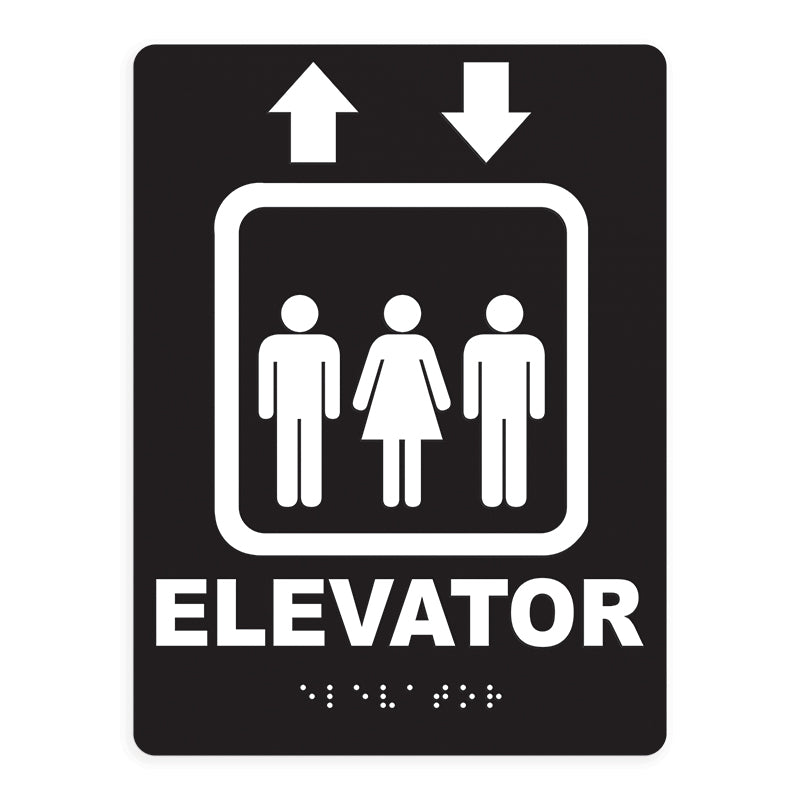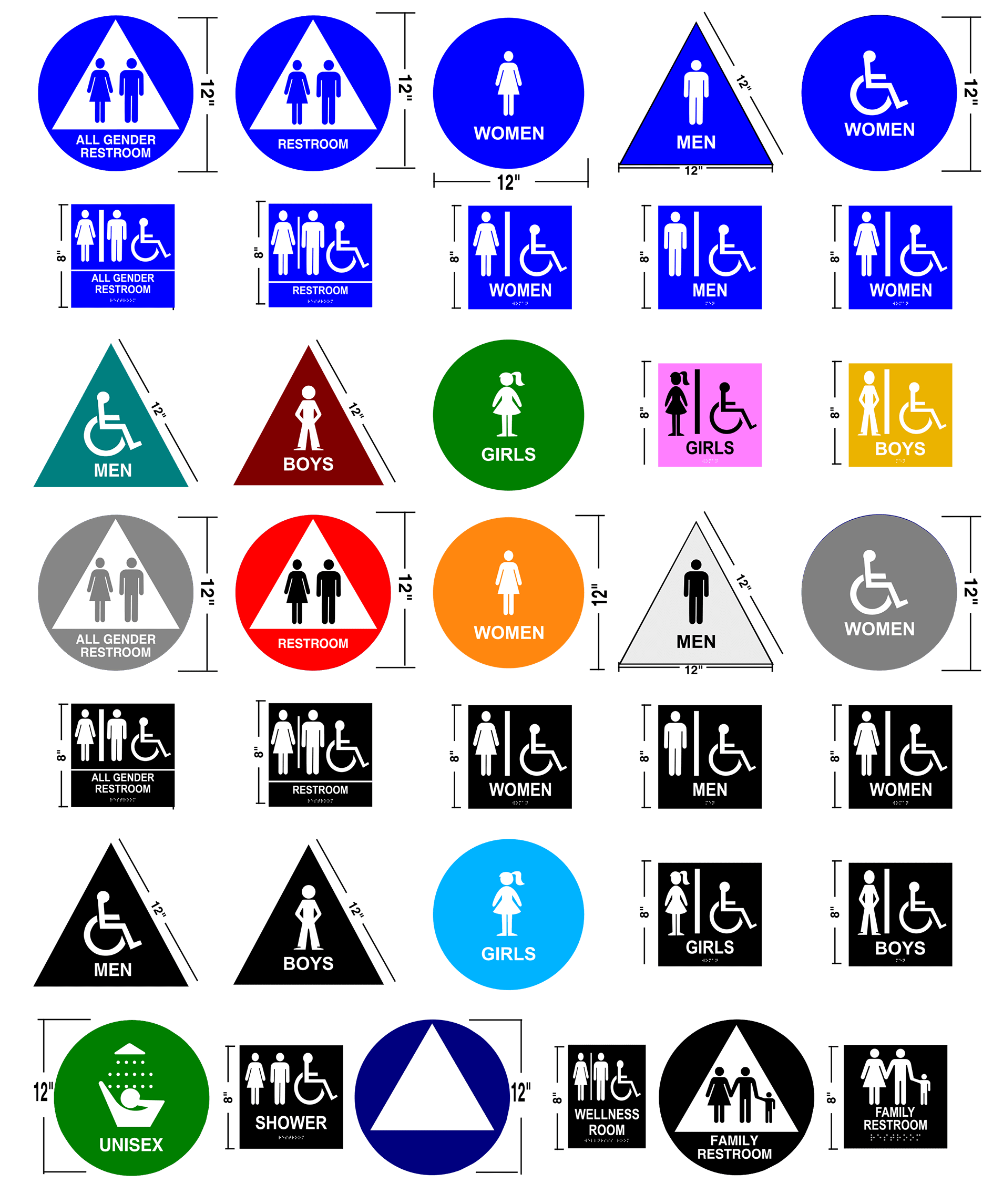Checking Out the Trick Attributes of ADA Signs for Improved Availability
In the world of availability, ADA signs serve as quiet yet effective allies, ensuring that rooms are accessible and inclusive for individuals with handicaps. By incorporating Braille and responsive components, these indications damage barriers for the visually impaired, while high-contrast color plans and clear typefaces provide to varied visual requirements.
Relevance of ADA Conformity
Ensuring compliance with the Americans with Disabilities Act (ADA) is critical for cultivating inclusivity and equivalent gain access to in public spaces and workplaces. The ADA, passed in 1990, mandates that all public facilities, companies, and transportation solutions suit people with specials needs, ensuring they take pleasure in the exact same legal rights and chances as others. Conformity with ADA criteria not only satisfies lawful responsibilities yet additionally boosts an organization's track record by showing its dedication to diversity and inclusivity.
One of the key facets of ADA conformity is the application of obtainable signage. ADA indicators are developed to guarantee that individuals with disabilities can quickly navigate via structures and areas. These indications need to adhere to certain guidelines concerning dimension, font style, color contrast, and placement to assure exposure and readability for all. Effectively implemented ADA signage aids remove barriers that people with disabilities typically come across, consequently promoting their freedom and self-confidence (ADA Signs).
Additionally, sticking to ADA policies can minimize the risk of prospective fines and legal repercussions. Organizations that fail to abide by ADA guidelines may encounter suits or charges, which can be both economically difficult and harmful to their public image. Hence, ADA conformity is important to cultivating an equitable atmosphere for everybody.
Braille and Tactile Aspects
The unification of Braille and tactile aspects into ADA signage symbolizes the concepts of accessibility and inclusivity. It is usually placed underneath the corresponding text on signage to make sure that people can access the information without visual help.
Tactile aspects prolong beyond Braille and include increased signs and personalities. These parts are developed to be noticeable by touch, permitting individuals to identify space numbers, bathrooms, departures, and other essential locations. The ADA establishes specific standards regarding the dimension, spacing, and placement of these tactile elements to maximize readability and make certain uniformity across various settings.

High-Contrast Shade Schemes
High-contrast color design play a pivotal duty in improving the visibility and readability of ADA signs for individuals with aesthetic disabilities. These systems are necessary as they make the most of the difference in light reflectance in between message and background, making sure that indications are conveniently discernible, also from a distance. The Americans with Disabilities Act (ADA) mandates the usage of particular shade contrasts to accommodate those with minimal vision, making it an important aspect of compliance.
The efficiency of high-contrast colors hinges on their ability to attract attention in various lights conditions, consisting of poorly lit environments and locations with glow. Usually, dark message on a light background or light message on a dark background is employed to attain optimum contrast. Black message on a white or yellow history offers a stark visual distinction that aids in quick recognition and understanding.

Legible Fonts and Text Size
When taking into consideration the layout of ADA signs, the selection of understandable typefaces and ideal message size can not be overstated. The Americans with Disabilities Act (ADA) mandates that fonts must be sans-serif and not italic, oblique, manuscript, very attractive, or of uncommon type.
The size of the text also plays a pivotal role in accessibility. According to ADA guidelines, the minimal message elevation must be 5/8 inch, and it ought to enhance proportionally with viewing range. This is particularly essential in public spaces where signage demands to be reviewed swiftly and precisely. useful content Consistency in text dimension adds to a cohesive aesthetic experience, helping individuals in browsing environments successfully.
Additionally, spacing in between letters and lines is important to legibility. Adequate spacing prevents personalities from appearing crowded, improving readability. By sticking to these requirements, developers can substantially improve access, guaranteeing that signs serves its designated objective for all individuals, no matter their aesthetic capabilities.
Reliable Positioning Techniques
Strategic positioning of ADA signage is necessary for optimizing ease of access and making sure conformity with legal requirements. Effectively located signs assist people with disabilities efficiently, assisting in navigating in public spaces. Key factors to consider consist of distance, elevation, and presence. ADA standards specify that indicators should be mounted at a height between 48 to 60 inches from the ground to ensure they are within the line of sight for both standing and seated individuals. This conventional height variety is crucial for inclusivity, enabling wheelchair users and individuals of differing elevations to accessibility details easily.
Furthermore, signs have to be put adjacent to the lock side of doors to enable easy recognition before access. Consistency in sign positioning throughout a facility boosts predictability, decreasing complication and enhancing overall customer experience.

Conclusion
ADA indications play a vital function in advertising accessibility by integrating attributes that deal with the requirements of people with disabilities. Including Braille and responsive elements makes sure essential info comes to the visually impaired, while high-contrast color pattern and understandable sans-serif fonts improve exposure throughout numerous lighting conditions. Effective placement methods, such as ideal mounting heights and tactical places, better promote navigating. These elements collectively promote a comprehensive setting, emphasizing the importance of ADA compliance in making sure equivalent accessibility for all.
In the world of access, ADA indicators offer as quiet yet effective allies, making sure that rooms are accessible and inclusive for people with specials needs. The ADA, passed in 1990, mandates that all public facilities, employers, and transport solutions suit people with specials needs, ensuring they delight in the exact same rights and possibilities as others. ADA Signs. ADA indicators are developed to ensure that people with specials needs can quickly browse with buildings and rooms. ADA standards stipulate that signs need to be installed at a height in between 48 to 60 inches from the ground to ensure they are within the line of view for both standing and seated individuals.ADA indicators play a crucial role in advertising availability by integrating attributes that deal with the demands of people with handicaps